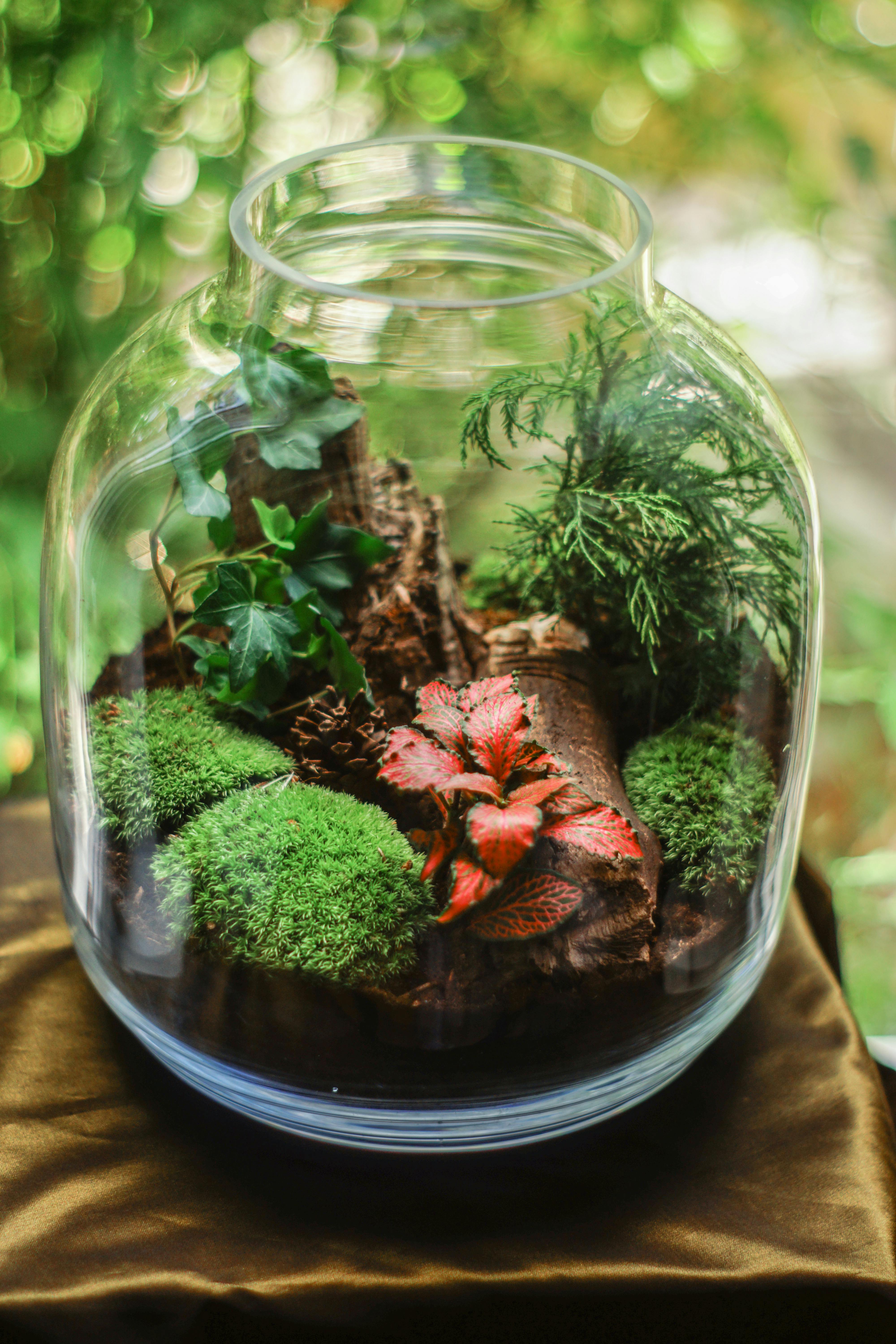Biodynamic Terrarium Ecosystems: The New Frontier of Indoor Gardening
Imagine a miniature world thriving within a glass container, a self-sustaining ecosystem that brings life and wonder to any room. This isn't science fiction, but the latest trend in indoor gardening: biodynamic terrariums. These living artworks are captivating homeowners and plant enthusiasts alike, offering a unique blend of horticulture, design, and environmental science right on your coffee table.

The Origins of Biodynamic Terrariums
The concept of terrariums dates back to the 19th century when botanist Nathaniel Bagshaw Ward accidentally discovered that plants could thrive in sealed glass containers. However, the biodynamic approach takes this idea several steps further. Inspired by the principles of biodynamic farming, which views farms as living organisms, biodynamic terrariums apply similar holistic concepts to create miniature, self-regulating worlds.
In the 1960s, ecologist Eugene Odum pioneered the study of closed ecosystems, laying the groundwork for what would become biodynamic terrariums. His research on energy flow and nutrient cycling in natural systems provided insights that would later be applied to creating these miniature ecosystems.
The Science Behind the Magic
At the heart of a biodynamic terrarium is a delicate balance of various life forms and natural processes. The key components include:
-
Plants: Carefully selected for their ability to thrive in enclosed environments.
-
Soil Microorganisms: Bacteria and fungi that break down organic matter and recycle nutrients.
-
Decomposers: Small insects or invertebrates that help break down dead plant material.
-
Water Cycle: A self-contained system where water evaporates, condenses, and returns to the soil.
-
Air circulation: Despite being sealed, the terrarium maintains a cycle of oxygen and carbon dioxide.
This intricate system creates a fascinating display of nature’s interconnectedness. As plants photosynthesize, they release oxygen and moisture into the air. The moisture condenses on the glass and returns to the soil, watering the plants. Meanwhile, decomposers break down dead plant matter, releasing nutrients back into the soil.
Designing Your Biodynamic Masterpiece
Creating a biodynamic terrarium is as much an art as it is a science. The process begins with selecting an appropriate container - typically glass to allow light penetration and create a greenhouse effect. The shape and size can vary, from traditional globe terrariums to modern geometric designs that double as sculptural pieces.
Layering is crucial in establishing the foundation of your ecosystem. Start with a drainage layer of small pebbles or activated charcoal, followed by a layer of sphagnum moss to prevent soil from seeping into the drainage layer. The soil mixture should be specially formulated for terrariums, often including materials like coconut coir and vermiculite for optimal moisture retention and aeration.
Plant selection is where creativity meets functionality. Opt for slow-growing, humidity-loving plants that can thrive in low-light conditions. Popular choices include ferns, mosses, and small tropical plants. The key is to create a diverse yet balanced plant community that mimics natural ecosystems.
The Living Decor Revolution
Biodynamic terrariums are at the forefront of a growing trend in living decor. As urban dwellers seek to reconnect with nature, these miniature ecosystems offer a slice of the wild in even the smallest of spaces. They’re not just plants in a jar; they’re conversation pieces, educational tools, and sources of calm in our fast-paced world.
Interior designers are embracing biodynamic terrariums as focal points in modern spaces. Their versatility allows them to complement various design styles, from minimalist to eclectic. Some designers are even incorporating them into furniture pieces, creating coffee tables or wall installations that house living ecosystems.
Maintenance and Care: Less is More
One of the most appealing aspects of biodynamic terrariums is their low maintenance nature. Once established, these ecosystems require minimal intervention. In fact, over-care can disrupt the delicate balance within the terrarium. Here are some key care tips:
-
Light: Place in indirect sunlight to avoid overheating.
-
Watering: Typically needed only every few months, if at all.
-
Pruning: Occasional trimming to maintain plant size and shape.
-
Cleaning: Wipe the exterior glass to maintain visibility.
-
Observation: Regular monitoring for signs of imbalance or decay.
The goal is to let the ecosystem function on its own, intervening only when necessary. This hands-off approach not only saves time but also allows owners to witness the fascinating processes of a self-sustaining environment.
Educational and Therapeutic Benefits
Beyond their aesthetic appeal, biodynamic terrariums offer significant educational and therapeutic benefits. They serve as excellent tools for teaching ecology, biology, and environmental science. Watching the intricate interactions within the terrarium provides a tangible understanding of ecosystem dynamics.
From a wellness perspective, these miniature gardens can have a calming effect, reducing stress and improving mood. The act of creating and maintaining a biodynamic terrarium can be a form of horticultural therapy, promoting mindfulness and connection with nature.
The Future of Indoor Ecosystems
As our understanding of ecology and microbiology advances, so too does the potential for biodynamic terrariums. Researchers are exploring ways to create even more complex and diverse ecosystems within these confined spaces. Some envision terrariums that could help purify air in urban environments or serve as models for larger-scale ecosystem restoration projects.
The rise of biodynamic terrariums reflects a broader shift towards more sustainable and nature-integrated living spaces. As we continue to grapple with environmental challenges on a global scale, these miniature ecosystems remind us of the beauty, complexity, and resilience of nature.
In conclusion, biodynamic terrariums represent a fascinating convergence of science, design, and nature. They offer a unique way to bring the outdoors inside, creating living art that evolves and thrives with minimal intervention. As this trend continues to grow, we can expect to see these self-sustaining ecosystems becoming staple features in homes, offices, and public spaces, reminding us of our connection to the natural world and the delicate balance that sustains all life.





